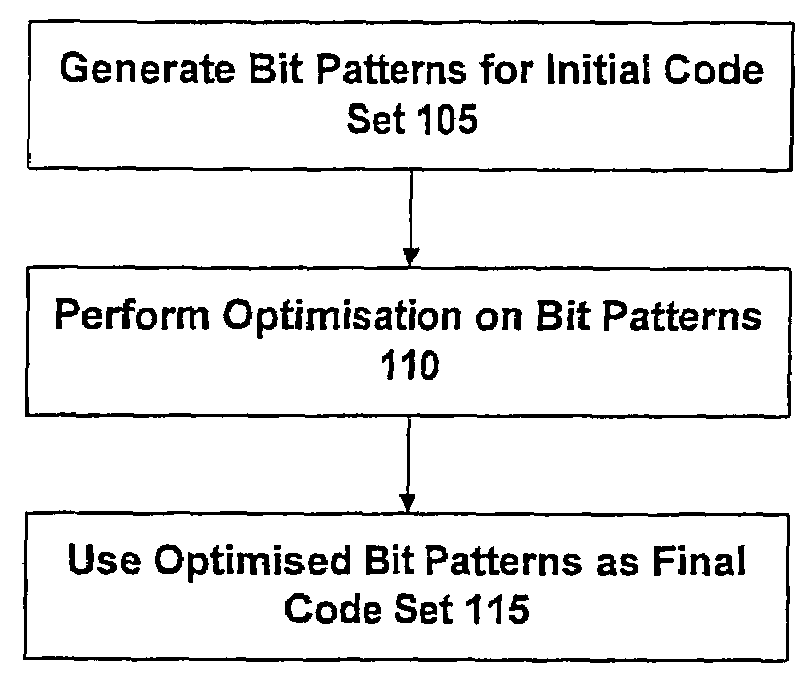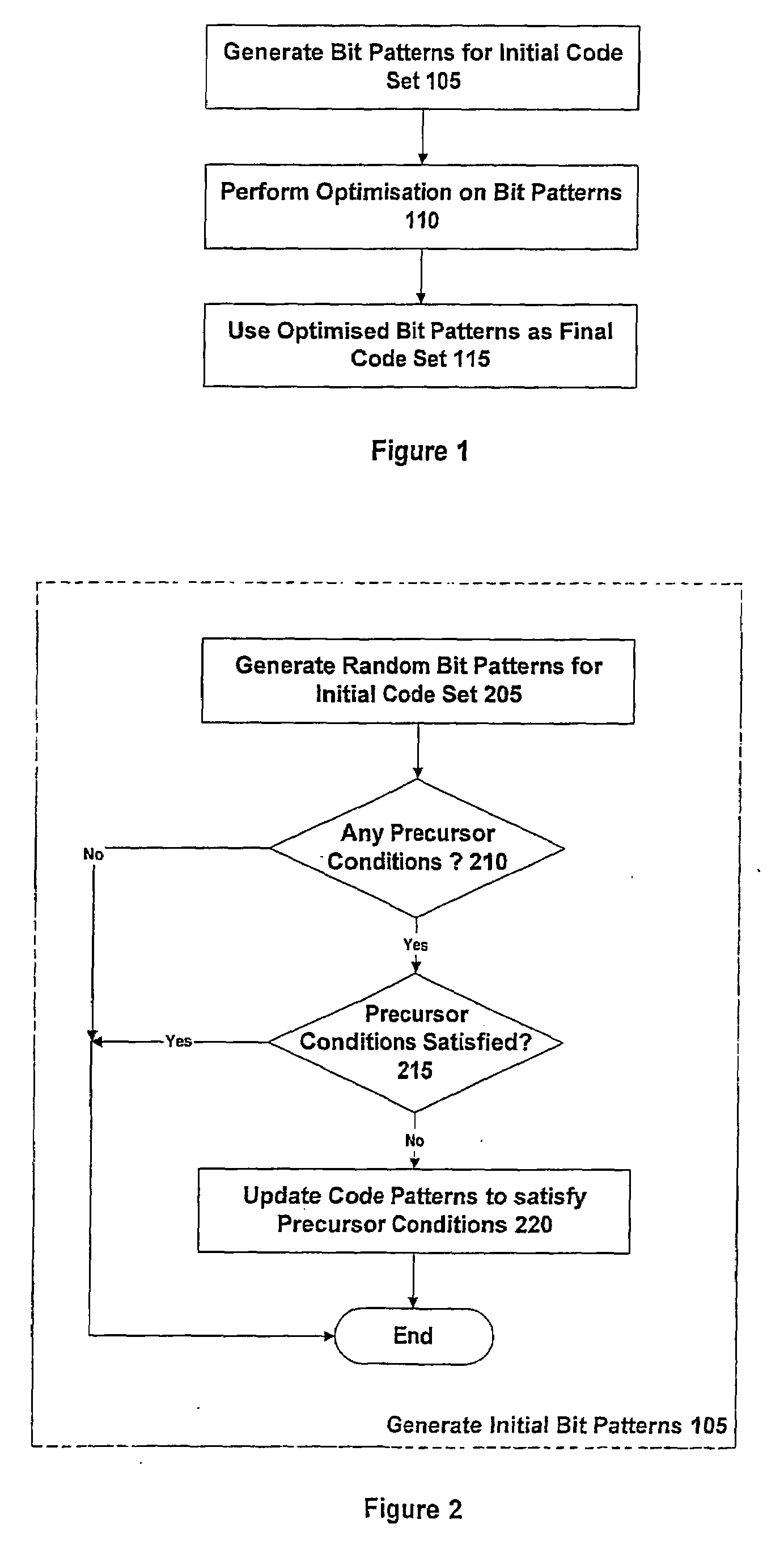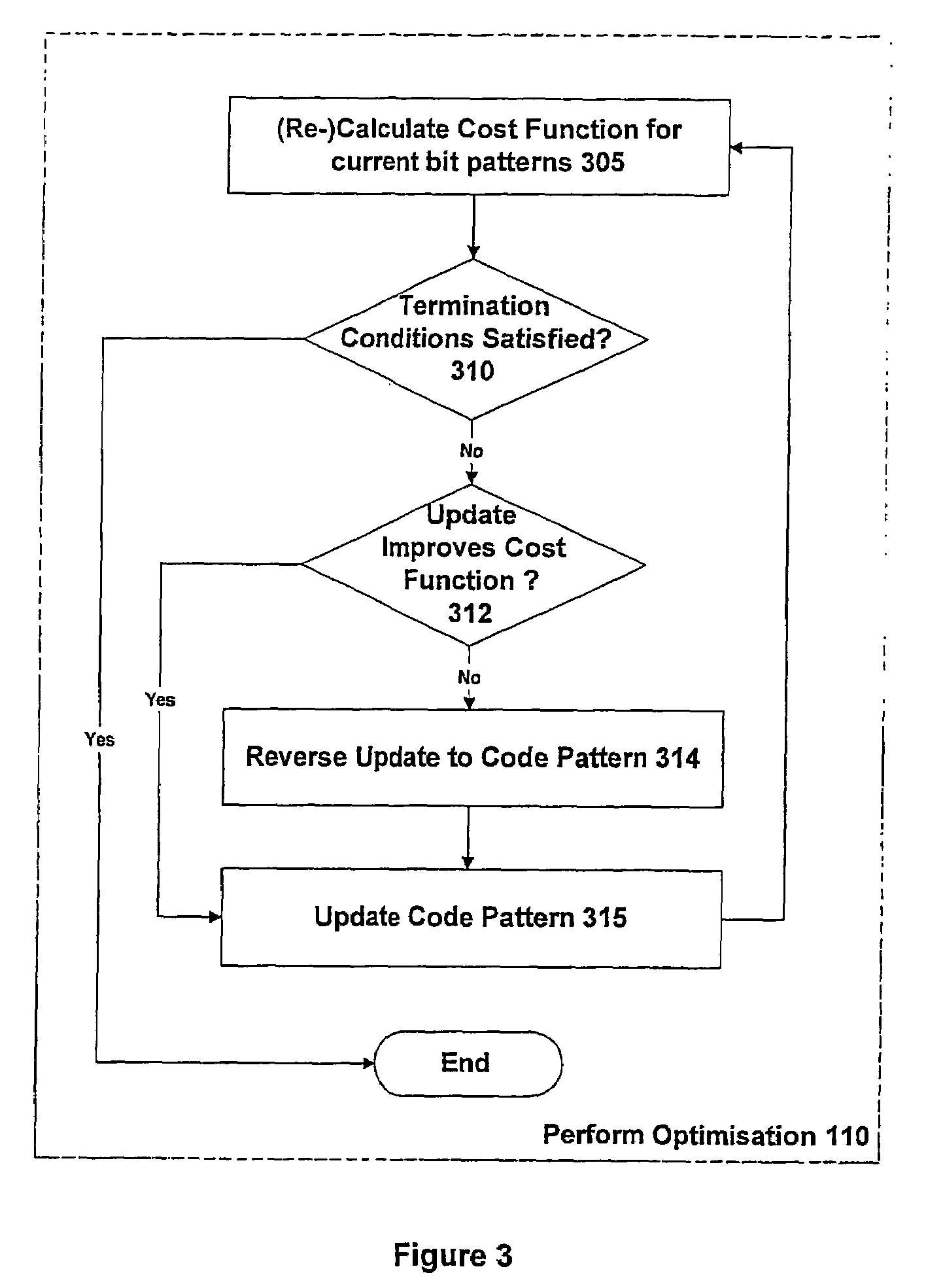Spreading Codes for a Satellite Navigation System
a satellite navigation and code technology, applied in multiplex communication, instruments, transmission, etc., can solve the problems of delay in initial acquisition of signals, ambiguity in position determination, and need for more processing capability in the receiver, so as to facilitate the updating of codes used
- Summary
- Abstract
- Description
- Claims
- Application Information
AI Technical Summary
Benefits of technology
Problems solved by technology
Method used
Image
Examples
Embodiment Construction
[0046]In contrast to prior art techniques for finding spreading codes, which are based on codes derived from mathematical algorithms, the present approach uses spreading codes that do not adhere to any particular formal mathematical structure. Rather, spreading codes having arbitrary bit sequences are permitted, and an attempt is made to determine an optimum set of spreading codes to use based on one or more objective criteria.
[0047]Note that for spreading codes of a length typically used in satellite navigation systems (say 1000 bits or more), the number of possible codes is very large (once constraints as to mathematical structure are removed). For example, for a code period of length N bits, the total number of balanced bit sequences can be specified as:
(NN / 2)≈2N2Nπ(Eq.1)
which for N=16,384 bits corresponds to ˜104930 (far more than the 8192 Gold codes of length 16,384 bits). This very large number of possible balanced codes implies that an exhaustive examination of all possible c...
PUM
 Login to View More
Login to View More Abstract
Description
Claims
Application Information
 Login to View More
Login to View More - R&D
- Intellectual Property
- Life Sciences
- Materials
- Tech Scout
- Unparalleled Data Quality
- Higher Quality Content
- 60% Fewer Hallucinations
Browse by: Latest US Patents, China's latest patents, Technical Efficacy Thesaurus, Application Domain, Technology Topic, Popular Technical Reports.
© 2025 PatSnap. All rights reserved.Legal|Privacy policy|Modern Slavery Act Transparency Statement|Sitemap|About US| Contact US: help@patsnap.com



